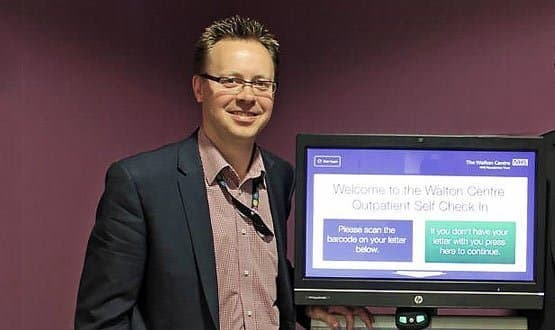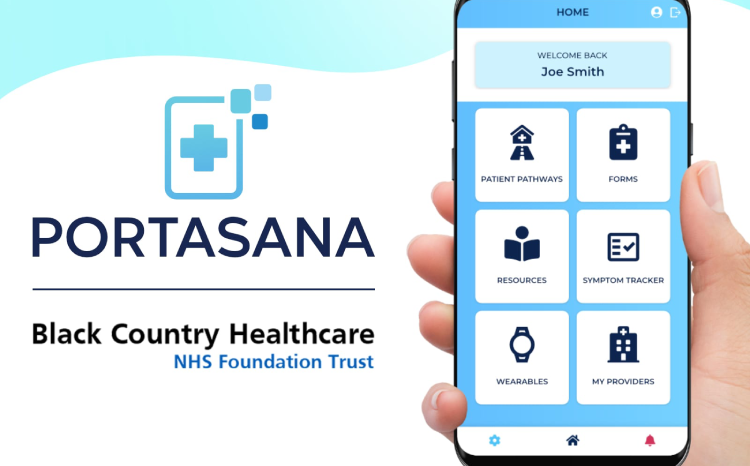CCIO profile: Martin Wilson
- 23 June 2014

Ask most chief clinical information officers about engaging board members in the potential of informatics, and you tend to get an answer which is a variation on a theme: it is critical, but it is not necessarily easy.
To say it is unusual to encounter a CCIO who has had to temper the enthusiasm of his executive colleagues for IT developments is an understatement.
It quickly becomes apparent that there are a few aspects of Martin Wilson’s experience that differ from the norm, however.
A consultant neurologist at The Walton Centre NHS Foundation Trust, Wilson took up the role of clinical lead for IT in 2012. The organisation is one of the relatively small number of trusts that is committed to the in-house development route.
Walton believes this is part of the reason the executive team is so convinced of the value of IT – but it’s also the reason that he occasionally has to channel their eagerness.
“In the early years of our in-house development, there were a few business-type programs designed: dashboards for our executive team, and process-centred things,” he explains.
“I think the executive team immediately saw the benefit of those; but the applications were business-focused rather than the very clinical things we’re trying to focus on now.
“If anything, one of the problems we have had in the last 18 months is to try and stop the corporate and business side of the trust hijacking our programmers and IT people.
“We have had to try to say: look, we’ve got enough on our plates to develop our own EPR and, if we don’t do that, there will be real problems. We've done that now, but for a time that was holding us back a bit.”
Building an open source EPR
A number of clinical IT development projects are now fully underway, and Wilson hopes that the approximately £800,000 that the trust secured from the first, ‘Safer Hospitals, Safer Wards: Technology Fund’ will see progress accelerate.
The trust put in for a number of projects under the ePatient banner. One is to make it possible for nurses to electronically record observations and early warning scores. This project is a good illustration, Wilson says, of why the organisation has chosen to go the in-house development route.
“We’re a small, specialist trust, and that necessarily means we might have to do things differently: as a specialist trust, for example, the national early warning score system doesn’t quite fit for us.
“So, we want to develop something that does our own things but, at the same time, calculates the national score so we can benchmark against it.
He continues: “The big, off the shelf products ‘do this’ but they never ‘do that’, and you've then got to get the vendor to develop something; and it might take six months and it might take six years. And they're enormously expensive, a lot of these products.
“I think we've taken the view that it'll be better to take a bit of time, but get something bespoke, rather than just jump in and get an off the shelf, out of the box EPR.”
Big systems still present issues
CCIOs at district general hospitals might feel envious of the position that the Walton Centre is now in: since they also face challenges with big supplier systems, and would like the agility to run projects that fit local requirements.
But Wilson says his trust’s relative freedom is not without its limits. It has not been practical or desirable to develop everything in-house. And in those instances, being a small, specialist organisation has occasionally led to a lack of choice.
“We are sometimes tied in with other hospitals or trusts for certain aspects of their service, and then that can tie you in to their software or hardware,” he explains.
“Pharmacy and prescribing is a good example. We don’t have our own pharmacy, so we get those services from Aintree Hospital, which is next door.
“That meant that when we recently went live with EPMA (electronic prescribing and medicines administration), we had to go with their EPMA. Essentially we had no choice – our hands were tied.
“But while we have the same EPMA, we’re different trusts with different patient administration systems. So it’s been a major headache getting all those systems to talk to each other – or to stop talking to each other, sometimes,” he says with a wry laugh.
Long term concerns
As a clinician and clinical lead for IT at a tertiary centre, Dr Wilson says that issues of interoperability and information sharing are never far from his mind.
“A lot of the patients we see, we don’t accept from primary care; we accept from another hospital. I think the exchange and links between and across organisations is particularly acute for us.
“We serve perhaps a dozen DGHs regularly. They’ve all got different primary care agencies, and we’re further and further away from their social care provision. Things like discharge planning and long term condition management therefore becomes more and more difficult.
“I don't think any of us are naive enough to think that this issue is going to be straightforward to solve,” he continues. “Increasingly, different centres are going to be procuring their own systems.
“There isn't going to be an NHS version of VistA [the open source system developed by the Veterans Health Administration in the USA, in which NHS England showed great interest last year, before going down the tech fund route, with some limited support for open source developments].
“More and more, when you speak to NHS England, it really is going to be about ‘connecting all’, not all sharing the same system.
“It sounds easy if we all talk about [using the messaging standard] HL7 [to make sure systems can exchange information with each other]. But in fact one of the biggest things we've had is the costs of generating interfaces between programs and applications.
“The cost of these products – the licences – is probably not the big deal; we're going to spend a lot more money and time just coding and writing interfaces between things.”
Going open source?
Interestingly, Wilson suspects that one of his main tasks in the coming months will be to redirect his executive team’s enthusiasm once again; this time from the potential for recouping money from all the development work that is now going on.
“I don’t think we can really claim to be open source yet, because we haven’t published our code on websites,” he admits. “But that certainly is my ethos, and that of our IT lead.
“And I think it's going to be interesting to see how the executive team reacts when push comes to shove and we actually say, ‘right, we're publishing this code’.
“I think some of them probably have an instinct to try and leverage that financially in some way. I think one of my roles over the next year is to try and distance them from the idea that you can make a lot of money just by licensing these things. Because, to be honest, you probably can’t.”
In all other ways, though, Wilson sees massive potential for the IT work on which he is leading clinically.
“I think all CCIOs would say the same thing, which is that the reason we do this is that – despite all the frustrations – we feel that this really does have the potential to change healthcare more than anything else.
“You look at drug developments, new operations and so on… Well, all that’s great but I think doing this right is going to change things more over the next five years.”




